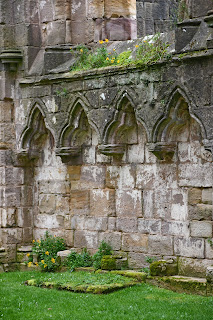Northern Road Trip: Day 3 – Studley, Rievaulx, Castle Howard, and York
It was a cloudy morning when Johnny and I arrived at the Studley Royal Park. We came before the ticketed part opened, so we wandered around a little, taking pictures of the pheasants and goslings before returning to the gate. Despite Studley being officially listed as a National Trust monument, I got free entry thanks to a local partnership between the NT and English Heritage. Studley Royal Park is home to the massive, ruined Fountains Abbey, which was among the wealthiest during its blossom. It stands on top of the stream and after reaching it from the southern bank, we crossed to the northern bank and walked back to the entrance along the more elevated pathway.
Ruined abbeys seem to
be the specialty of Yorkshire, as our very second stop was the Abbey at
Rievaulx. Interestingly, the glory days of Rievaulx Abbey were long gone by the
time Henry VIII dissolved the monasteries. From a peak of 140 monks in the 13th
century, the abbey declined to only 21 in 1538. Its financial ruin was caused
by the trifecta of sheep scab, Viking raids, and the black death, which all
either throttled the abbey’s income or killed its inhabitants.
On a lighter note, our
third destination for the day was Castle Howard. Though the interiors had
closed to visitors by the time we arrived, the grounds were extensive. In front
of the castle stands a fountain featuring the titan Atlas, who has been consigned
to carry the heavenly spheres while a bunch of mermen unhelpfully blow water at
him through their silly conch-like trumpets. Further from the entrance is the
picturesque Temple of the Four Winds, and at the end of the park, one can see
the mausoleum in the distance. As far as I could tell, the mausoleum cannot be
visited by the public, which is a shame because it seems like a very impressive
building.
It was still bright
out when we got back to York, so we decided to climb the old town walls and walk
from Bootham Bar in the west to Monk Bar in the east. Despite their sometimes
being known as “the Roman Walls,” the town’s defences as they stand today were
built in the 13th and 14th centuries and restored during
the Victorian era; not much of the stonework from the Roman walls remains.




















































Comments
Post a Comment